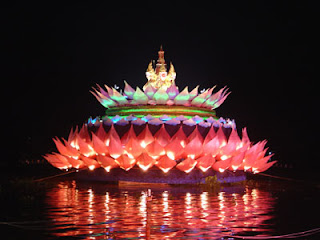Central
Hence, food in the central part is diverse and the taste is moderate with the combination of salty, spicy, sour and sweet according to the recipes. However, there are also the mixing of the seasonings both odor and taste, for instance, spices and the coconut milk.
Moreover, the central part food is usually composed of supplement, for instance chilli paste with sweet pork and sweet, salty paste with margosa.
The main characteristic of the food in this region is the refinement of the vegetables and fruits carving that represent the identity of the arts and culture of the Thai food.
article from http://www.thaifoodtoworld.com/
Southern
The southern part of Thailand is the peninsula, thus, almost of the population earn their living by fishery.Hence, the main food ingredients are the seafood. Spices are also the favorite ingredients which make the taste spicy, salty and sour, for instance, Kaeng tai pla, Kaeng som and Kaeng luang, etc.
The southern food is delicious to supplement with vegetables in order to decrease the spicy taste, ‘pak nhoa’, for instance, ma-kheua pro, yard-long beans, wing bean, parkia, etc.
Northern
The northern part of Thailand is the ancient land where the tradition and culture are different from other parts.The eating pattern in the north, instead of sitting at the table, the northern people usually put all the dishes in the big bowl called ‘kan tok’ and sit altogether on the floor around the bowl.
Basically, sticky rice is the main food. Almost of the cooking are well done and fried with oil.
North East
The northeast part of Thailand is hardly dry, therefore the main ingredients for food are actually varieties of insects which are the main protein sources for people in this area.The main food is also the sticky rice. Vegetables and meats are almost local products.
Fermented fish is the main mixture to seasoning almost every dish but not for fried cooking and usually supplement with fresh vegetables.










